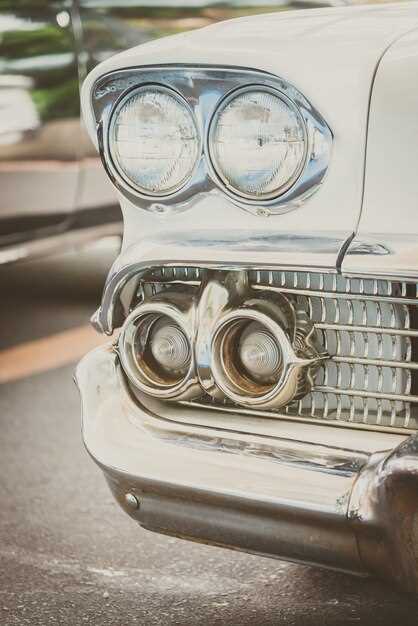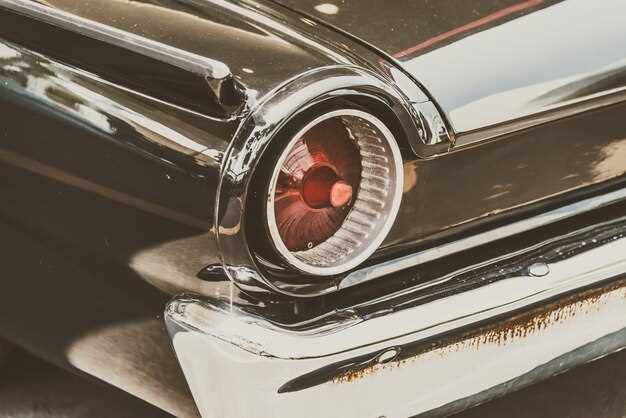
Classic cars hold a special place in the hearts of automotive enthusiasts. Their timeless designs and rich histories make them objects of admiration, but many owners seek to push the limits of these vintage machines. Tuning classic cars for enhanced performance and power not only revitalizes their driving experience but also pays homage to their engineering marvels. This journey involves a combination of modern techniques and genuine craftsmanship, blending the old with the new.
The primary goal of tuning classic cars is to unlock their full potential. Whether it’s refining the engine’s output or improving the handling dynamics, each modification must be approached with precision and care. Performance upgrades can include everything from installing a high-performance air intake system to upgrading the exhaust for improved airflow. Such enhancements can lead to significant gains in horsepower and torque, allowing classic cars to compete more effectively in today’s driving landscape.
In addition to mechanical improvements, tuning involves optimizing a car’s suspension and braking systems. Classic cars often feature outdated components that can hinder performance. By investing in modern suspension technology and high-quality brake systems, owners can achieve enhanced driving stability and safety. Balancing aesthetics with functionality is vital; thus, ensuring that modifications respect the car’s original character while improving its capabilities is essential for any serious enthusiast.
Upgrading Engine Components for Increased Horsepower

Upgrading engine components is a crucial step for classic car enthusiasts aiming to boost horsepower and performance. By carefully selecting and replacing certain parts, significant gains in power output can be achieved. Below are key components to consider when upgrading your engine.
Cylinder Heads: Optimizing airflow is vital for performance. Upgrading to high-performance cylinder heads can enhance combustion efficiency by allowing more air and fuel into the engine. Look for heads with larger ports and improved valve sizes. Additionally, consider using aluminum heads, which are lighter and can improve heat dissipation.
Cams and Camshaft Kits: The camshaft controls the timing and lift of the engine’s valves. Installing a performance camshaft designed for higher RPMs can lead to increased horsepower. Consider a cam profile that matches your engine’s performance goals and consider a hydraulic roller setup for greater durability and efficiency.
Intake Manifolds: A high-performance intake manifold can significantly improve air intake efficiency. Dual-plane or single-plane manifolds can be chosen based on the desired powerband. A well-matched manifold allows for optimal airflow, reducing restrictions and enhancing throttle response.
Exhaust Systems: Upgrading the exhaust system is essential for allowing the engine to breathe. High-flow headers and exhaust pipes reduce back pressure, increasing horsepower. Choose materials like stainless steel for durability and corrosion resistance, ensuring long-term performance improvement.
Fuel System Upgrades: Increasing horsepower requires more fuel. Upgrading to higher-flow fuel injectors, a larger fuel pump, and a performance fuel regulator will ensure your engine receives adequate fuel. Proper tuning of the air-fuel mixture is crucial for achieving the best performance and avoiding engine damage.
Tuning and Engine Management: Once modifications are made, proper tuning is essential. Utilizing a performance engine management system can optimize fuel maps and ignition timing, maximizing the benefits of your engine upgrades. Consider a standalone ECU or a performance chip that can be tailored to your specific setup.
In summary, upgrading engine components such as cylinder heads, camshafts, intake and exhaust systems, fuel systems, and tuning systems can lead to substantial increases in horsepower for classic cars. Each modification should be carefully considered and paired for optimal performance results.
Optimizing Suspension Systems for Improved Handling

Suspension systems play a crucial role in a classic car’s overall performance and handling capabilities. To optimize your vehicle’s suspension for improved handling, several key components and adjustments must be considered.
First, upgrading to high-performance shock absorbers is essential. These components provide better damping control, reducing body roll during cornering and enhancing tire traction. Adjustable shocks allow for fine-tuning the compression and rebound settings based on driving conditions, leading to more precise handling characteristics.
Next, consider installing performance springs. Stiffer springs can reduce body movement and improve cornering stability. Lowering the ride height by adjusting the springs can also lower the center of gravity, which further enhances handling dynamics. However, it’s crucial to balance the stiffness and ride height to maintain comfort during everyday driving.
Another significant upgrade involves anti-roll bars, also known as sway bars. Thicker sway bars help reduce body roll during turns, improving the car’s overall stability. Upgrading to adjustable sway bars allows you to customize the level of stiffness to suit different driving styles and conditions.
Bushing upgrades are often overlooked but are vital for improving suspension performance. High-performance polyurethane or spherical bushings reduce deflection and provide a more direct connection between suspension components. This upgrade enhances responsiveness and feedback during aggressive driving.
The alignment of the suspension is another critical aspect that affects handling. Ensuring proper camber, caster, and toe settings can greatly influence tire contact with the road, improving grip and steering response. Regular alignment checks are essential, especially after making any suspension modifications.
Finally, consider upgrading to a complete coilover system, which integrates springs and shocks into a single unit. Coilovers provide adjustable ride height and damping settings, allowing for greater customization tailored to specific driving preferences or conditions.
By focusing on these key areas–shocks, springs, sway bars, bushings, alignment, and coilovers–you can significantly enhance the handling of your classic car, making it more responsive and stable during spirited driving.
Choosing the Right Tires and Wheels for Enhanced Grip
Selecting the appropriate tires and wheels is crucial for maximizing the performance and grip of your classic car. Tires are the only contact point between the vehicle and the road, making their choice vital for handling, stability, and acceleration.
Tire Type: The selection of tire type should reflect your driving conditions and the intended use of the vehicle. For dry performance, high-performance summer tires offer excellent traction and responsiveness. If your classic car is used in varied conditions, consider all-season tires that provide a balance between grip and durability. For enthusiasts aiming for maximum grip on the track, dedicated racing tires are designed specifically for superior performance under extreme conditions.
Tread Design: The tread pattern significantly impacts how the tire interacts with the road. Tires with wider grooves and aggressive patterns are designed for off-road or wet conditions, providing better water dispersion and reducing hydroplaning. Conversely, tires with a smoother surface enhance grip and minimize rolling resistance on dry surfaces, ideal for sporty driving.
Tire Size: Upgrading to wider tires increases the contact patch with the road, enhancing traction. However, it’s essential to ensure that the new size fits within the car’s wheel wells and does not interfere with suspension components. Maintaining the proper aspect ratio is critical to avoid affecting ride quality and handling characteristics.
Wheel Selection: When choosing wheels, consider materials and construction. Lightweight alloy wheels reduce unsprung weight, improving handling and acceleration. Ensure that the wheels’ width supports the selected tire size adequately, allowing for tire deformation during cornering, which enhances grip.
Pressure and Maintenance: Maintaining correct tire pressure is crucial for optimal performance. Under-inflated tires can lead to increased rolling resistance and reduced traction, while over-inflation can lead to a harsh ride and uneven wear. Regularly checking tire condition for any signs of wear or damage is essential for safety and performance.
In summary, selecting the right tires and wheels involves evaluating your driving style, intended use, and environmental conditions. Paying attention to the type, tread design, size, material, and maintenance will ultimately enhance grip and elevate the performance of your classic car.
